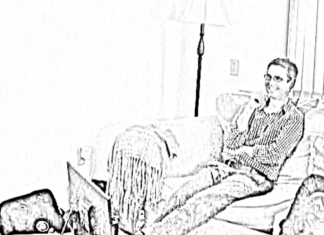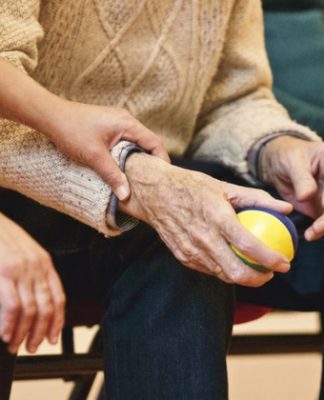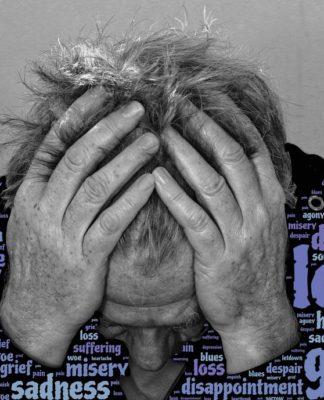The inspiration and backdrop for this text
I was 19-years-old when I started to take an interest in finding a more authentic and psychologically liberated way of life. This took the form of reading books on spirituality, attending meditation retreats, and this impulse eventually led me to take up residence at a Zen Buddhist training center where I spent nearly 2 years.
The Zen training increased my ability to focus and my overall discipline, but it also seemed to leave me estranged from more vital and spontaneous parts of myself, and the emotional straight jacket that had been with me prior to my arrival to Zen Buddhism remained rather intact, and in some ways, felt even tighter.
After I left this form of semi-monastic Zen training I sought out a psychotherapist who had trained closely with Dr. Habib Davanloo, an Iranian-born psychiatrist known for developing a method of psychotherapy called Intensive Short-Term Dynamic Psychotherapy, or ISTDP for short.
My experience with the receiving end of this form of therapy turned out to be far more liberating than residential Zen training had ever been. Based on this experience, I set out on a course to learn how to help others through psychotherapy the way I had been helped.
It’s been nearly 14 years now since I finished my own therapy. I managed to fulfill my dream of becoming a psychotherapist, and I have remained peripherally involved in the world of Zen by attending a handful of week-long meditation retreats throughout the years. The emotional straight jacket is no longer a straight jacket, but a cloak that now and then falls over me and reminds me that I am still a work in progress.
The following thoughts are a result of my experiences as a meditator and a clinician, and they connect directly with what I have learned from my own experiences as well as from the experiences of my patients.
My basic premise
I am operating from the basic premise and assumption that everyone has healthy impulses to want to be happy, to enjoy loving relationships, to find meaning by connecting to something larger than our narrow self-interests, and to be free from that which impedes the realization of these things.
I also believe that just as everyone has these healthy impulses, most of us also have self-defeating impulses and tendencies, where we consciously or unconsciously live our lives in ways that end up creating pain and misery for ourselves. In line with the ISTDP outlook, I believe that the raw material used in the service of the self-defeating impulses consist of automatic and often unconscious defense mechanisms — attempts and strategies to avoid the fulsome and unimpeded flow of experience (typically various feelings and emotions). I will be referring to these self-defeating tendencies as our “psychopathology,” or our “defended places.”
Models of psycho-spiritual change
Models of change, schools of thought providing one technology or another (a method, system, or practice) aimed at helping individuals in their psychological or spiritual evolution, indeed do seem to help a great many people. Certainly there are plenty of Zen Buddhist practitioners who can testify that their lives have been enriched as a result of their Zen training, and certainly there are people who have engaged in ISTDP informed psychotherapy and are better off as a result. I am one of those individuals (though as you will see, I have significant concerns about the embedded morality in Buddhism and most all forms of spiritual thought).
There are also accounts of individuals who have been harmed by these models of change, either due to gross incompetence or instances of abuse of power by the teacher or therapist. I will not focus on these instances and phenomena, but instead focus on some of the inherent dangers and pitfalls with any change model, even when all actors are engaging in good-faith. I will specifically focus on ISTDP and Zen Buddhism, since I have extensive and direct experience with both.
A healing process derailed
“Ideals are brutal things.” Jiddu Krishnamurti
Krishnamurti refers to ideals that we use to beat ourselves over the head with, ideals that have been co-opted by what Dr. Davanloo might refer to as the punitive super-ego, or what I am calling our defended places. Ideals that are not used in this self-punitive fashion, but that instead energize and inspire us are a different animal. They are north-stars that can help us orient and guide us towards our deepest and most cherished values.
With any model of change, our personal psychopathologies — the self-punitive and defended functions of our minds — can easily hijack the process that is supposed to be healing and liberating, and instead incorporate the chosen model into existing, pain-creating structures. Here the individual is proceeding down a path thinking they are “working on themselves” but in reality they are harming themselves.
This process where a healthy impulse gets co-opted by an unhealthy impulse is crucial to understand in detail. In ISTDP language, the punitive super-ego hijacks the train, masquerading as the “unconscious therapeutic alliance,” the healing force that Dr. Davanloo refers to as the inherent force within all of us which is striving for health and freedom.
Red-flags
One often reliable way to tell whether or not we are working on ourselves from a healthy place or from a defensive and self-punitive place is to attend to the basic feeling associated with what we are doing. This of course assumes we have enough access to our fundamental felt sense of what feels right, true, good, and healthy for us, which is not a given (and to complicate matters even more, some derive a satisfaction from hurting themselves).
A self-punitive kind of striving will have a feverish quality, a sense that we are over functioning, and whether clearly cognized or not, there will be an underlying sense that the driving force propelling us into our current mode of activity consists of a sense that we “should” be doing something. This kind of effort that comes from a defensive place may have a sense of running in place, revving the engine in neutral, and the overall process will have a flavor of agony and not feel very satisfying. If our entire lives begin to feel like one big therapy session, or just one meditation session, and we have a hard time taking a break and just doing something for the fun of it, an unhealthy process has likely taken over.
Typically, when we are in this mode of defensive striving, whether it’s conscious or not, we are typically engaging from a place of reacting to someone else — either trying to comply with what we imagine someone else wants us to do, or competing with someone, which can take the form of trying to defy them and prove them wrong.
Needless to say, when we are in a defended place like this, nothing really therapeutic or enlightening happens, and the more we struggle from this place, the more entangled and ensnared we become.
Compare and contrast defensive striving with a striving that comes from a healthy and undefended place. Healthy striving can be strenuous at times, and it can involve experiencing intense emotional pain, but there will be a sense of movement, of satisfaction, and it will reverberate with something deep in us where we just know that what we are doing or experiencing is right, true, and healthy for us. Here there are not any “shoulds” propelling us, but a genuine desire arising from our own depths, and not in reaction to anyone or anything else.
Another way that our healthy strivings can become co-opted by a defensive state masquerading as a healthy impulse is by what I call the “experience-seeking” defense. This defensive mode is just as self-punitive as the over-functioning mode, but less obviously so. Experience seeking is where we are continuously on the hunt for the next great experience. People that have a need to constantly travel come to mind, and in the context of psychological and spiritual change models, they are the people trying to have repeated “unlockings” in the therapy office (a peak experience in the ISTDP model) but without these experiences translating to real changes in their lives, no real traction occurs, and you might see this type of a person still neglecting their parental responsibilities in favor of the constant seeking out of therapy retreats and therapy sessions with different therapists.
In the Zen world, they are the people attending countless meditation retreats trying to have kensho (Japanese Zen term for a peak spiritual enlightenment experience), all the while bypassing their relational and practical lives which are often in tatters as a result.
In the Zen, or spiritual path context, if you find yourself trimming your sails by shunning a spontaneous proud feeling at having accomplished something, denying dependency needs, or pushing away sexual feelings because these feelings are “unspiritual” and make you a “bad” Zen student, chances are that your healthy spiritual impulse has been co-opted by a defended and misguided place.
The shadow side of the models
Whether we are informed by an ISTDP outlook and are trying to let go of defenses (maladaptive defenses are the identified culprits in ISTDP), or we are on a Zen Buddhist path trying to become enlightened by seeing through the illusion of separate self (seeing ourselves as fundamentally separate from the rest of existence is the ultimate culprit in Zen), the very trying in both instances often comes from defended and ultimately self-punitive places within ourselves. The change models can (knowingly or unknowingly) exploit these type of vulnerabilities in human beings.
In ISTDP, the disrespect towards defenses that Dr. Davanloo was able to so skillfully utilize in a therapeutic way with some patients can become fodder for a client’s self-loathing and shame (defensive reactions), and the continuous admonitions from Zen teachers to move past a self-referential orientation towards a selfless way of life (how many times during my residential Zen training did I not hear things like ‘there is no self’) can undermine and stifle vital developments such as individuation, finding our voice, boundary-setting, experiencing healthy anger, and developing a healthy sense of self-respect and autonomy. …To this day I regret that in response to the endless lectures about no-self at the Zen Center, I did not respond with, “then why don’t we move the money in your bank account over to mine, since there is no self, it should not make a difference.”
Dr. Davanloo’s position about the “total removal of resistance” can easily activate perfectionistic defenses as well as arrogance, as we can begin to look down on other models of therapy as far more superficial. The continuous insistence in Zen that there is no self and therefore all thoughts and behaviors that contain self-interest prop up this illusion and bog down our spiritual growth tends to be toxic to healthy self-development and self-functions, as mentioned earlier, and can easily mobilize defenses of self-denial (all feelings other than love and compassion, and all self-serving needs come from the false self or ego, thus they must be denied, or at the very least not attended to). The impossible ideal of selflessness becomes a set-up for the Zen student to feel like a failure and to experience internal fragmentation, as no one ever becomes truly selfless and free from self-interest (those who think they are selfless have merely become really good at self-deception).
The actual experience of unlocking the unconscious tends to be tremendously healing, and the actual experience of being so meditatively present that all self-referential thinking goes silent can be truly awesome and liberating. These are truly wonderful experiences. The problem comes when we reify these experiences and create ideals that suggest that if we are not having them, we are somehow defective. When these are the waters we traffic in, we have made cults of what may otherwise be very helpful change models.
The Zen crowd are likely to deny that they make an ideal of selflessness, but this appears to be another instance of self-deception. Try walking into a Zen Center and discuss how much you love making money and having sex and observe the reactions. Though often unspoken, there are simply things you just don’t do or talk about at those places. A self-centered orientation is clearly frowned upon, which means selflessness indeed has been reified and made into an ideal in Zen.
Though aspects of the models and how they are taught have a role in exploiting human vulnerabilities and tendencies to create pain for ourselves, at the end of the day it is our responsibility as individuals to be our own inner authorities and to stay truthful and connected to our personal felt sense of what is right, true, and helpful for us at any given moment in time.

 I have a passion for practicing ISTDP informed psychotherapy and I enjoy writing about it. For more information and what I do, visit my website: www.johanneskieding.com
I have a passion for practicing ISTDP informed psychotherapy and I enjoy writing about it. For more information and what I do, visit my website: www.johanneskieding.com

















